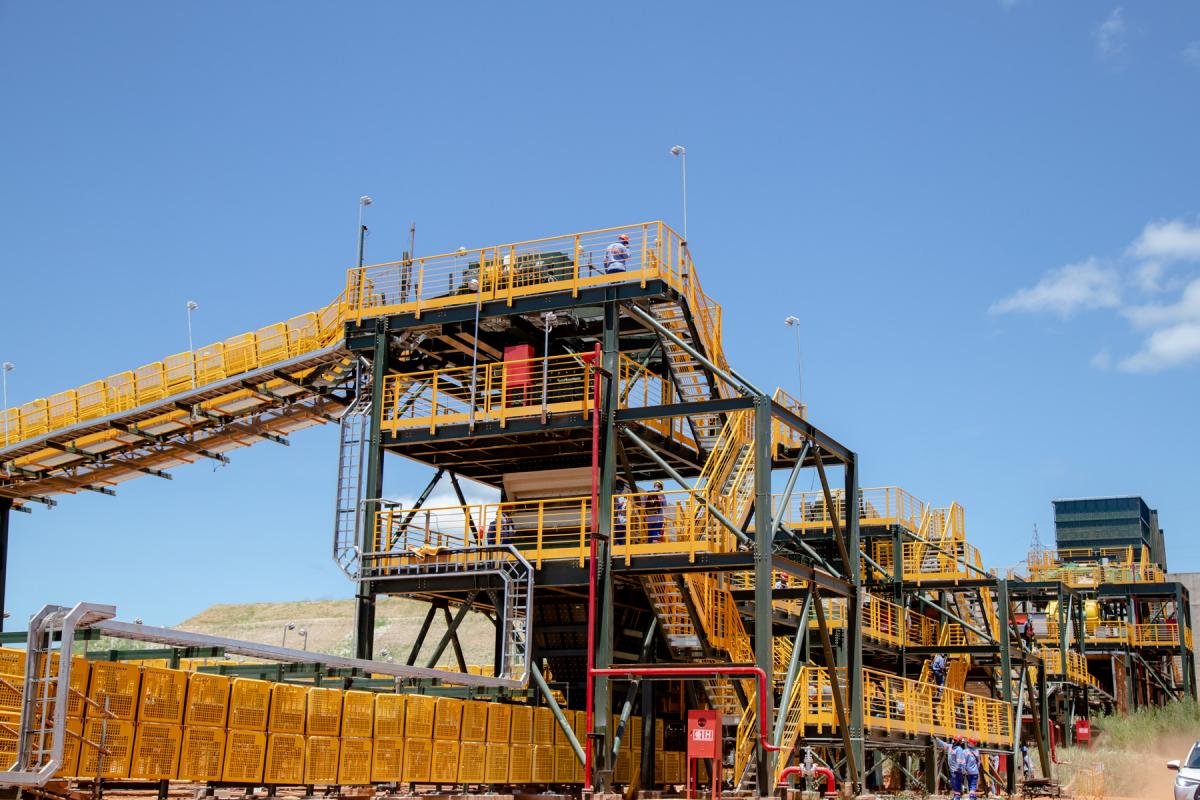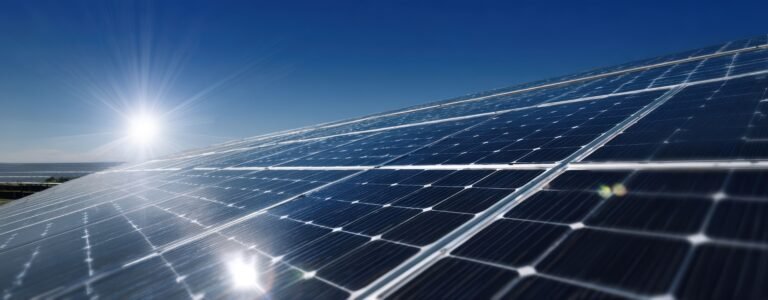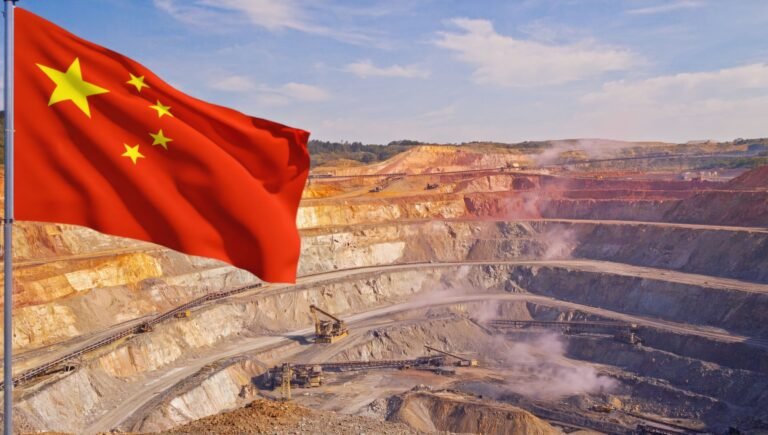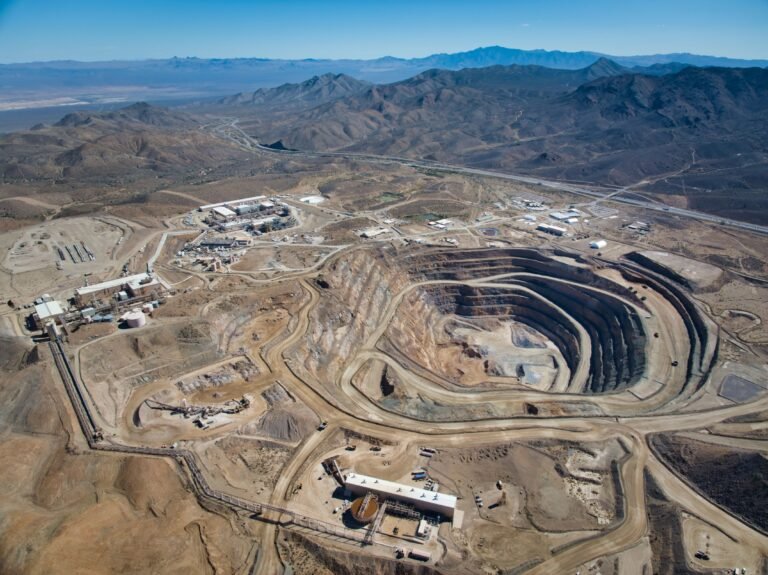Q2 Metals (TSXV:QTWO) recently released initial metallurgical test results for samples from its Cisco lithium project in Quebec. The results seem to suggest that the orebody will support DMS-only processing without the need to build a separate flotation circuit. That’s good news from our point of view. But why do we think so?
What are DMS and Flotation?
DMS (Dense Media Separation) and Flotation are both methods used to separate minerals from waste material using their physical and chemical properties.
- DMS requires mined material to be crushed to millimetre (mm) size and then it can be separated by gravity.
- Flotation requires material to be crushed then ground to micron size (1/1000 mm) and then the powder is mixed with water containing reagents, with the minerals made hydrophobic so they float to the top of the tank and can be skimmed off.
In the lithium mining industry several of the first and second generation operations use DMS and flotation to maximise recovery. But in some of the more recent mine developments DMS only can be used because of the size of the spodumene crystals.
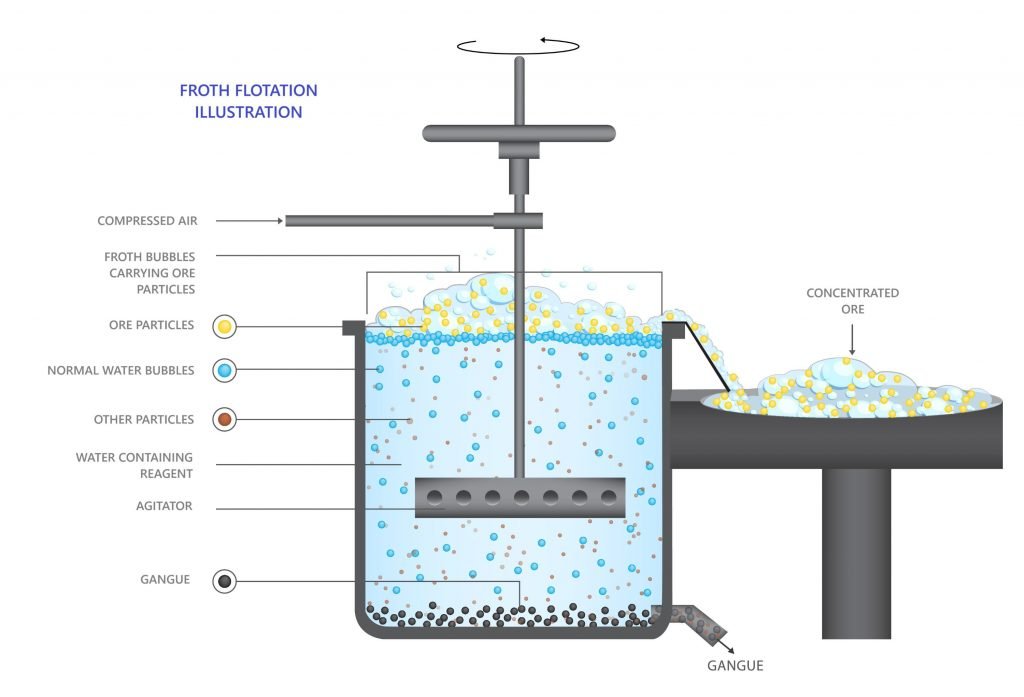
Why is that important? Well, because it’s substantially cheaper from both a capital cost and operating cost perspective.
A DMS-only processing operation such as that used by Sigma Lithium (NASDAQ:SGML) at Grota do Cirilo in Brazil may use a two or three stage crushing circuit to reduce ore material to a 10mm crush size and then put it through DMS and magnetic separation. Sigma uses dry magnetic separation which means that it doesn’t need to use any reagents in its processing operations.
A DMS and flotation operation like PLS‘s (ASX:PLS) Pilgangoora mine in Western Australia may use a two or three stage crushing circuit, and an additional grinding circuit to reduce grind size to sub 212 microns. It utilises a mix of gravity, HMS, flotation and magnetic separation. It will either need to use a tailings pond or dewater its tailings if it wants to dry stack them.
Cost impact of DMS vs Flotation
You can therefore understand that the capital cost requirements of some crushers and a DMS circuit are substantially less than crushers, grinders and three or four different separation techniques.
There is also a substantial difference in the operating costs. Pegmatite is a very hard material with a high work index. Hence the difference in power needed to reduce a pegmatite to 10mm particle size compared to 200 microns is significant.
A simple question to ChatGPT yields the answer that for an “average pegmatite”:
- To reduce from 150mm particles to 10mm particles would require under 1kWh of power per tonne
- To reduce from 150mm particles to 200 micron requires an order of magnitude more power of around 15-20kWh/t
The chart below shows the difference between capital intensity and operating costs for DMS only and DMS+Flotation for a number of SpodCon mining projects that have been built over the past few years.
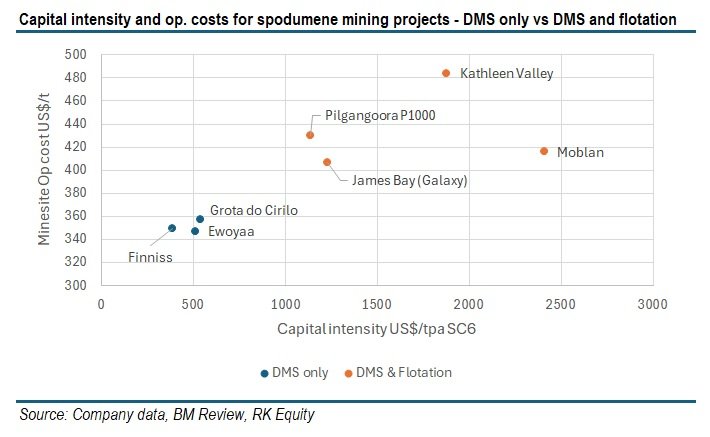
You can clearly see that the DMS+Flotation projects have a substantially higher capital intensity and higher operating costs than the DMS only projects. While factors such as whether projects require ore sorting or are open pit or underground have impacts on costs, the ability to use DMS only makes lithium mining projects cost substantially less to build and operate.
Hence why Q2 Metals’ announcement of the initial met test results for the Cisco project are so important.

